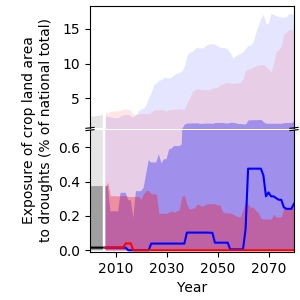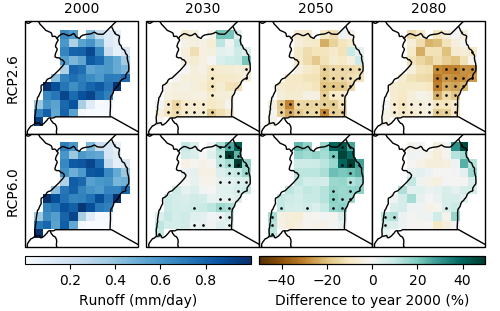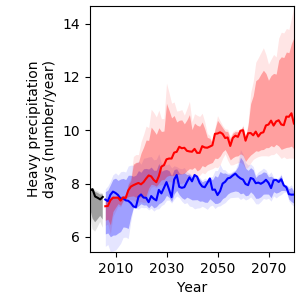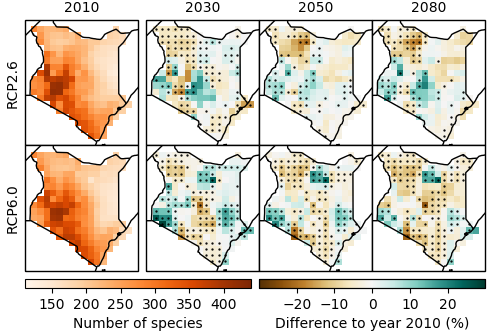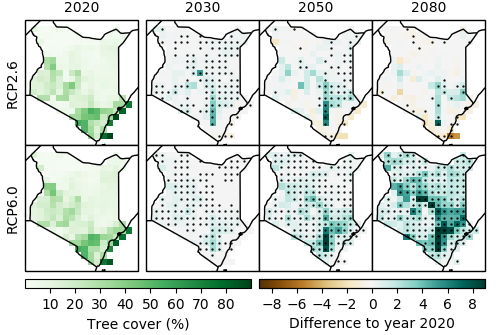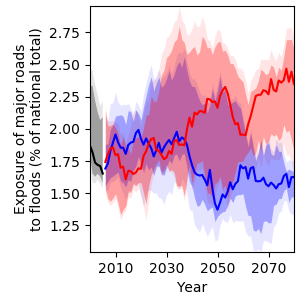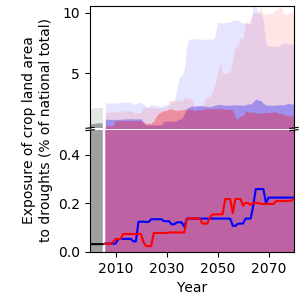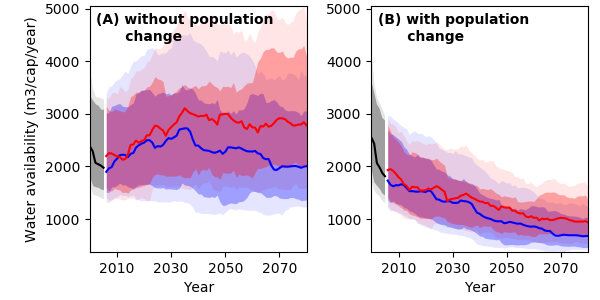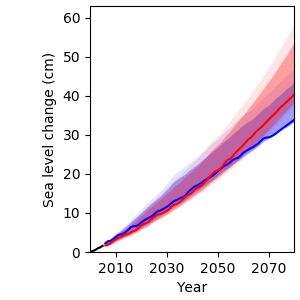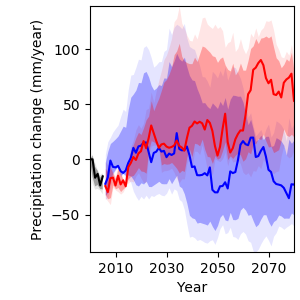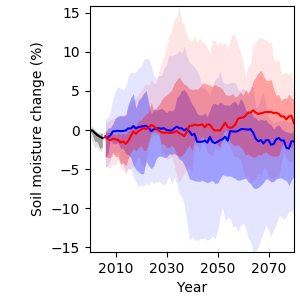Climate change is expected to significantly affect Uganda’s infrastructure sector through extreme weather events, such as flooding and droughts. High precipitation amounts can lead to flooding of transport infrastructure including roads, railroads and airports, while high temperatures can cause roads, bridges and protective structures to develop cracks and degrade more quickly. Transport infrastructure is essential for social, economic and agricultural livelihoods: Roads serve communities to trade their goods and access healthcare, education, credit as well as other services, especially in rural and remote areas. Uganda’s transport sector is dominated by road transport accounting for 90 % of passenger and freight traffic [23]. Compared to other low-income countries in Africa, road density in Uganda is high at 365 km / 1 000 km². However, especially district roads which connect to rural areas are in poor condition, limiting accessibility of rural areas, especially during the rainy season [23]. Investments will have to be made into building climate-resilient road networks.
Extreme weather events will also have devastating effects on human settlements and economic production sites, especially in urban areas with high population densities like Kampala or Gulu. Informal settlements are particularly vulnerable to extreme weather events: Makeshift homes are often built in unstable geographical locations including river banks, where flooding can lead to loss of housing, contamination of water, injury or death. Dwellers usually have low adaptive capacity to respond to such events due to high levels of poverty and a lack of riskreducing infrastructures. For example, heavy rains in December 2019 caused flooding and landslides in different regions across Uganda, particularly affecting communities in the east of the country [24]. At least 38 people have died and a total of 300 000 people were affected [24]. Flooding and droughts will also affect hydropower generation: Uganda draws 77 % of its energy from hydropower with a total installed capacity of 914 MW in 2017 [25]. However, variability in precipitation and climatic conditions could severely disrupt hydropower generation.
The risk of infrastructure damage in Uganda is likely to increase. However, projections of river flood events are subject to substantial modelling uncertainty, largely due to the uncertainty of future projections of precipitation amounts and their spatial distribution, affecting flood occurrence (see also Figure 4). For Uganda, projections of major roads exposed to river floods are characterised by high modelling uncertainty with median projections showing a decrease of 5 % under RCP2.6 and an increase of 9 % under RCP6.0 by 2080 compared to 7 % in the year 2000 (Figure 12). Exposure of urban land area to river floods is projected to hardly change under RCP2.6 and to increase from 0.3 to 0.9 % under RCP6.0 (Figure 13).
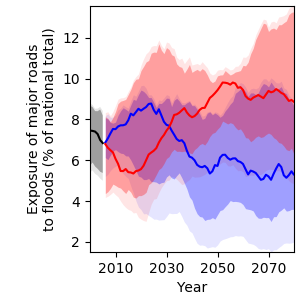
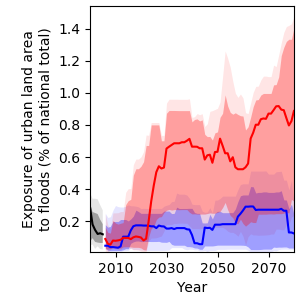
With the exposure of the GDP to heatwaves projected to increase from 0.2 % in 2000 to 2.8 % (RCP2.6) and 9.6 % (RCP6.0) by the end of the century (Figure 14), it is recommended that policy planners start identifying heat-sensitive production sites and activities, and integrating climate adaptation strategies such as improved solar-powered cooling systems, “cool roof” isolation materials or switching of hours of operation from day to night [26].

References
[23] R. Ranganathan and V. Foster, “Uganda’s Infrastructure: A Continental Perspective,” Washington, D.C., 2012.
[24] OCHA, “Uganda: Floods and Landslides,” New York, 2019.
[25] Electric Regulatory Authority, “Annual Report FY 2016–17,” Kampala, Uganda.
[26] M. Dabaieh, O. Wanas, M. A. Hegazy, and E. Johansson, “Reducing Cooling Demands in a Hot Dry Climate: A Simulation Study for Non-Insulated Passive Cool Roof Thermal Performance in Residential Buildings,” Energy Build., vol. 89, pp. 142–152, 2015.



